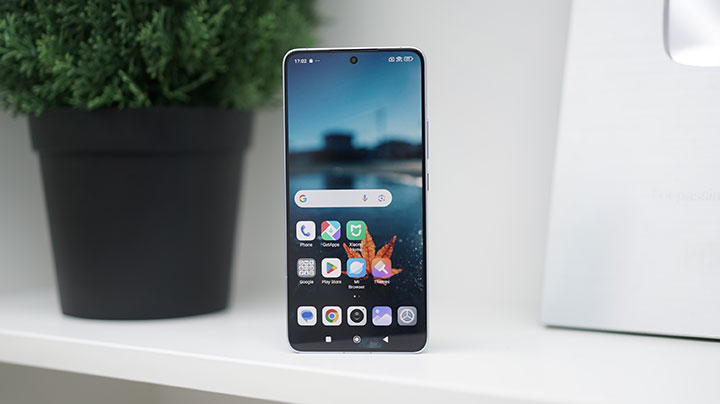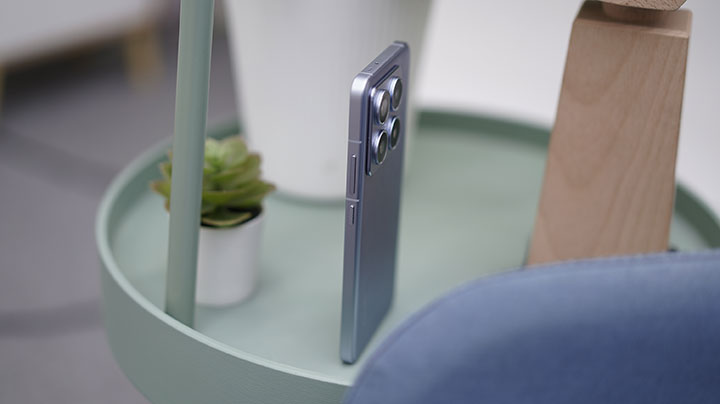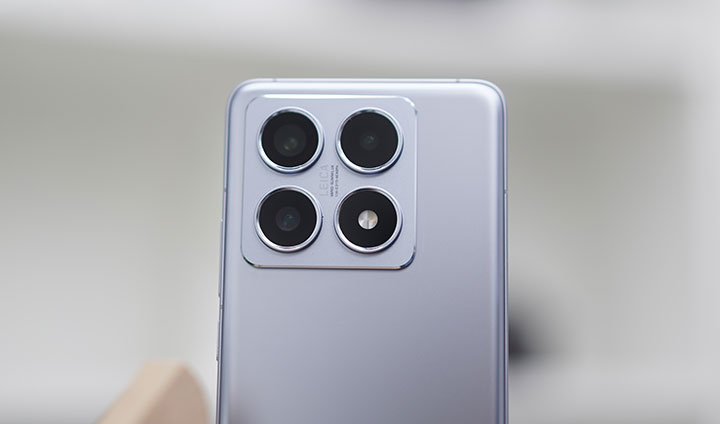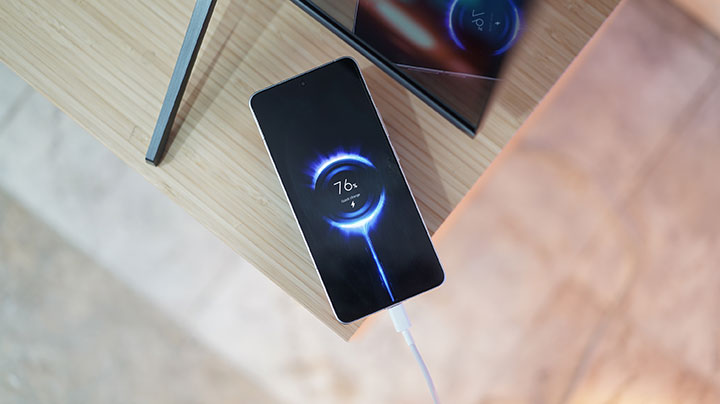Xiaomi’s flagship T-series phones have finally been revealed, headlined by the Xiaomi 14T Pro that’s powered by a Dimensity 9300+ and Leica co-engineered optics.

Between the Xiaomi 14T and the 14T Pro, the latter takes the cake in terms of hardware config and over-all performance. And with the promise of a more affordable price point, can the Xiaomi 14T Pro manage to eke enough attention as a flagship contender? We learn more in our full review.
Table of Contents
Xiaomi continues to release the T-series flagship smartphone at the second half of the year to constantly challenge new releases from competitors. It’s a well-crafted strategy that keeps them updated and competitive in the market.

The Xiaomi 14T series, specifically, the 14T Pro is no exception in this case.
Right out of the box, the Xiaomi 14T Pro retained most of the design aesthetics of its predecessor. It features a glass front and back material with metal alloy frame but with less subdued camera module at the back.

Xiaomi did not indicate the front glass protection but we reckon the use of glass for the back panel is needed to support wireless charging.
We appreciate the effort to trim down the thickness compared to the Xiaomi 13T Pro (8.39mm vs. 8.5-8.6mm) which we noticed right away after holding the phone while the over-all weight (209g vs. 200g/206g) slightly increased by a few grams.

The Xiaomi 14T Pro comes in three color variants — Titan Gray, Titan Blue, and Titan Black. Our review unit is in the Titan Gray and Titan Blue with matching metal frame and metal camera module. Between the two, we liked the gray variant and how it shimmers when hit by sunlight.

As mentioned earlier, the camera module on the 14T Pro has been redesigned with all three lenses and the LED flash housed in a protruding metal frame which is a departure from the glass housing on the previous model.
The power button and volume controls are found on the right side with the power button having a textured surface for easy identification. Up top, we have the IR blaster, secondary noise-canceling mic and what could be an air vent hole.

At the bottom end, we have the speaker grill, USB Type-C port, primary mic and the SIM card slot with two nano SIM tray with no microSD card expansion slot.

Also worth noting that the 14T Pro is also IP68 for dust and water resistance in fresh water to a maximum depth of 1.5 meters for up to 30 minutes.

Over-all, we liked the design and materials used, except for the part on the camera module that looked plain and not as striking or eye-catching as the design of the 13T Pro.
The Xiaomi 14T Pro features a flat 6.67-inch AMOLED display with a 1.5K resolution (2712×1220 pixels) and 446ppi pixel density. Furthermore, it also supports Pro HDR display with a high 144Hz refresh rate, 1,600 nits typical brightness and up to 4,000 nits peak brightness.

The flat glass up front is surrounded by high-strength aluminum alloy frame that flows smoothly towards the 3D-curved back panel to assure easy and comfortable grip. This design consideration will be greatly appreciated by gamers.
Xiaomi did not particularly mention Corning Gorilla Glass or Asahi DragonTail Glass as display protection but we think they’re using an older generation glass protection and never bothered to mention it (most likely, the same Gorilla Glass 5 used in the 13T Pro).

Display quality is superb — rich and vibrant colors, high contrast and crisp images. It’s also very bright and still readable even under direct sunlight.
Dark mode is baked into the settings for those who prefer it and the sunlight mode also adds enhanced definition under very bright conditions.
Refresh rates are set to default which dynamically adjusts it from 1Hz to 144Hz based on the need or scenario. However, you have the option to set it to Custom and select a preferred refresh rate (60Hz, 144Hz).
Games like Real Racing 3, Hill Climb Racing 2 and Subway Surfers will benefit support for 144Hz while more popular games like Mobile Legends, LoL, PUGB Mobile, CoD Mobile can handle only up to 120Hz. Genshin Impact will run smoothly at 60Hz at Highest settings.

For security, there’s an in-display fingerprint sensor that’s fast and responsive. Or, you can also set up facial recognition if you prefer that route. However, we find the fingerprint unlock to be really fast and accurate so we’re sticking with that.
For multimedia, we have to mention the stereo speakers that are found at the top and bottom ends of the device. Sound quality is great — crisp and well-balanced and when you can crank the volume up without getting any distortions. There’s no 3.5mm audio port but you are free to connect to external speakers or headphones via the Type-C port (using an adaptor) or use Bluetooth for the wireless route.
Also, a signature inclusion to all Xiaomi flagship devices is the addition of an infrared sensor which can be used with the native Remote app to pair to dozens and even hundreds of home appliances as a remote control. It can be handy at times when you have too many remotes at home and misplace any one of them.
The Xiaomi 14T Pro sports a triple Leica co-engineered cameras. The main shooter is a 50MP 23mm-equivalent camera that incorporates a Summilux optical lens with an ƒ/1.6 aperture. It uses a custom-designed Light Fusion 900 image sensor with Type 1/1.31-inch sensor size that includes a dual ISO Fusion Max technology.

The second Leica telephoto camera has a 50MP sensor with 60mm-equivalent focal length and ƒ/2.0 aperture while the 3rd Leica ultra-wide camera has a 12MP sensor with 15mm-equivalent focal length and ƒ/2.2 aperture.

The main camera performs really well, especially in low-light conditions, thanks to the large Light Fusion 900 sensor size and ƒ/1.6 wide aperture.
Just look at the sample night shots taken here:
Here are sample shots taken with all 3 of the Leica cameras:
For selfies, you have a non-Leica 32MP wide shooter with f/2.0 aperture. See samples below:
For video recording, the main camera can shoot up to 8K @ 24/30 fps and 4K @ 60fps.
The camera system on the Xiaomi 14T Pro is tuned by popular camera brand, Leica, and you can choose between two photographic styles — Leica Authentic Look and Leica Vibrant.
The Authentic Look produce images with a little boost in contrast while the Vibrant Look adds a little bit more vibrancy in the photos.
The 14T Pro runs on Xiaomi’s HyperOS 1.0 which is based on Android 14. This is also the first time that the T-series is getting the Xiaomi HyperOS 1.0 right out of the box.

It’s the same familiar user-interface that is highly customizable and comes with a lot of custom settings baked into the operating system.
Also a huge step forward with the Google collaboration is the integration of Google Gemini into the system which can be easily accessed via a long-press of the Home button. Gemini replaces and augments Google Assistant to provide generative AI capabilities on top of the old Google Assistant capabilities.

Xiaomi promises that some AI features of the Xiaomi 14T series, including Circle to Search, AI Interpreter, AI Notes, AI Recorder, AI Subtitles, AI Film, AI Image Editing, and AI Portrait, will be delivered via OTA updates after the launch.
The AI Interpreter initially supports 12 languages — Chinese, English, French, Spanish, Portuguese, Italian, German, Russian, Japanese, Korean, Hindi, and Indonesian. Support for Thai, Malay, Vietnamese, and Filipino will be introduced in subsequent OTA updates.

There are a few other 3rd-party pre-installed apps included here, such as Netflix, Facebook, Tiktok, Amazon Shopping, WPS Office, LinkedIn and Spotify.
The usual system and native apps are pretty much standard — Mi Mover, Xiaomi Community, QR scanner, Notes, and Mi Remote which uses the IR blaster to control home appliances.
Powering the Xiaomi 14T Pro is the latest Dimensity 9300+. This is the same configuration as the Dimensity 9300 but with the performance core (ARM Cortex-X4) clocked up to 3.4GHz from 3.25GHz. This includes an ARM Mali-G720 Immortalis MC12 GPU.

Note that while Xiaomi’s flagship number series use the latest Qualcomm Snapdragon chipset, the T-series use the latest Mediatek Dimensity chip.
Our review unit has 12GB of LPDDR5X RAM with up to 6GB RAM Extension and 1TB of internal storage. The system also allows the user to free up an additional 32GB of storage using UFS storage extension technology and storage optimization algorithms (Xiaomi calls it Ultra Space).

Antutu Benchmark v10.3.6: 1,965,922
Antutu V10 Storage: 3,783MB/s (Read), 3,511MB/s (Write), 2,144MB/s & 1427Mb/s (Random Read/Write)
PCMark Work 3.0: 15,577
GeekBench 6 CPU: 2,115 (Single core), 6,501 (Multi-core)
GeekBench 6 GPU: 13,011 (OpenCL), 14,560 (Vulkan)
The combination of flagship chipset, fast LPDDR5X RAM and UFS 4.0 storage showed impressive benchmark scores across the board.
This is evident with our experience in using the device in the past 2 weeks from playing graphic-intensive games and multi-tasking several apps. The device performed well, runs fast and snappy without much heat build-up, thanks to the Xiaomi 3D IceLoop system that helps dissipate heat and keep the device running smoothly and efficiently.
What’s actually curious is that the RAM allocation maxes out at only 12GB, compared to the 16GB in the older models from previous years. This will not really affect the performance of the device, except in rare occasions when running too many apps in the background. Nevertheless, the additional 6GB Extended RAM should ease that concern a bit.
With a 5,000mAh Li-Po battery, the Xiaomi 14T Pro can last more than an entire day with casual use. This involves the usual web browsing, playing YouTube, social media and a few round of mobile games on WiFi.
In our PCMark Work 3.0 battery test, the 14T Pro scored a good 14 hours and 29 minutes at 50% brightness, zero volume and in airplane mode. In our video loop test, the device lasted 23.5 hours under the same settings.
These results showed much better scores compared to the ones we got from the 13T Pro (PCMark: 12 hours, 56 mins; Video Loop: 18 hours, 40 minutes).
We also played a few rounds of Mobile Legends at Ultra settings and managed to get around 7 hours and 43 minutes of gameplay at 50% brightness, 50% volume and in WiFi connection.

Like its predecessor, the Xiaomi 14T Pro has a Surge P2 charging chip to achieve a single-cell battery with 120W HyperCharge, allowing the device to be charged to 100% in under 20 minutes.
And, for the first time, the Xiaomi 14T Pro now supports wireless charging with up to 50W (charges in under 45 minutes).
What’s surprising is that Xiaomi did not include the 120W charging brick in the box, a move that can only be construed as cost-cutting.
For connectivity, the device supports dual 5G, WiFi 7, Bluetooth 5.4, NFC, GPS and an IR blaster. The phone also supports dual SIM configuration in either nano SIM + nano SIM, nano SIM + eSIM, eSIM + eSIM.
Xiaomi’s flagship T-series phones are getting better and better every year and this is evident with the new Xiaomi 14T Pro. It’s so good that the gap between the T-series and the flagship number series is almost negligible from a consumer stand-point — similar design, comparable performance, camera and battery.

And, with the T-series being the more affordable flagship, the Xiaomi 14T Pro might even steal the limelight this season. We were looking hard to find any fault with the device but came up empty.
From a hardware stand-point, it’s got everything you’d wish for in a brand new flagship phone. And, if you can find something else to complain about, that would just be plain nitpicking.

As for Philippine pricing, the Xiaomi 14T Pro will have a starting price of Php 39,999USD 682INR 57,783EUR 649CNY 4,964 for the 12GB + 512GB variant and Php 41,999USD 716INR 60,672EUR 682CNY 5,212 for the 12GB + 1TB combo.
What we liked about it:
* Great performance
* Impressive Leica cameras
* Wireless charging
* Longer battery life vs. predecessor
* Water resistance
* Generous storage options, up to 1TB
What we did not like:
* Charging brick not included
* Toned-down design
* Maxes out at 12GB of RAM
Xiaomi 14T Pro specs:
6.67-inch CrystalRes AMOLED display @ 2712×1220 pixels, 446ppi
144Hz refresh rate, Pro HDR display, 1,600 nits (typ), 4,000 nits peak brightness
MediaTek Dimensity 9300+ chipset
1x Cortex-X4 @ 3.4GHz + 3x Cortex-X4 @ 2.85GHz; 4x Cortex-A720 @ 2.0GHz
ARM Mali-G720 Immortalis MC12
12GB LPDDR5x RAM (+6GB Extended RAM)
256GB (+8GB) 512GB (+16GB), 1TB (+32GB Ultra Space) UFS 4.0 internal storage
Light Fusion 900 image sensor
50MP Leica main camera, 23mm, ƒ/1.6
50MP Leica telephoto camera, 60mm, ƒ/2.0
12MP Leica ultra-wide camera, 15mm, ƒ/2.2
32MP 25mm f/2.0 front camera
WiFi 7
Bluetooth 5.4
5G, dual SIM (Nano-SIM and eSIM, dual stand-by)
USB Type-C 2.0
AI face unlock
In-screen fingerprint sensor
IP68 dust and water resistance
Xiaomi HyperOS 1.0.5 (based on Android 14)
5,000mAh Li-Po battery, 120W HyperCharge, 50W wireless HyperCharge
160.4mm x 75.1mm x 8.39mm (dimensions)
209 grams (weight)
Titan Gray, Titan Blue, Titan Black (colors)

YugaTech.com is the largest and longest-running technology site in the Philippines. Originally established in October 2002, the site was transformed into a full-fledged technology platform in 2005.
How to transfer, withdraw money from PayPal to GCash
Prices of Starlink satellite in the Philippines
Install Google GBox to Huawei smartphones
Pag-IBIG MP2 online application
How to check PhilHealth contributions online
How to find your SIM card serial number
Globe, PLDT, Converge, Sky: Unli fiber internet plans compared
10 biggest games in the Google Play Store
LTO periodic medical exam for 10-year licenses
Netflix codes to unlock hidden TV shows, movies
Apple, Asus, Cherry Mobile, Huawei, LG, Nokia, Oppo, Samsung, Sony, Vivo, Xiaomi, Lenovo, Infinix Mobile, Pocophone, Honor, iPhone, OnePlus, Tecno, Realme, HTC, Gionee, Kata, IQ00, Redmi, Razer, CloudFone, Motorola, Panasonic, TCL, Wiko
Best Android smartphones between PHP 20,000 - 25,000
Smartphones under PHP 10,000 in the Philippines
Smartphones under PHP 12K Philippines
Best smartphones for kids under PHP 7,000
Smartphones under PHP 15,000 in the Philippines
Best Android smartphones between PHP 15,000 - 20,000
Smartphones under PHP 20,000 in the Philippines
Most affordable 5G phones in the Philippines under PHP 20K
5G smartphones in the Philippines under PHP 16K
Smartphone pricelist Philippines 2024
Smartphone pricelist Philippines 2023
Smartphone pricelist Philippines 2022
Smartphone pricelist Philippines 2021
Smartphone pricelist Philippines 2020
AJ says:
Do you have a review of Xiaomi 14T po? Thanks!